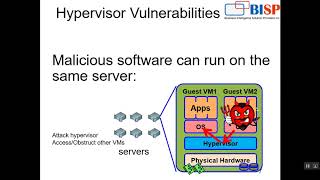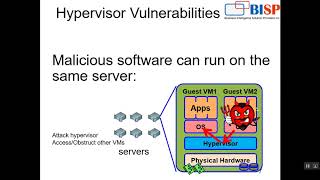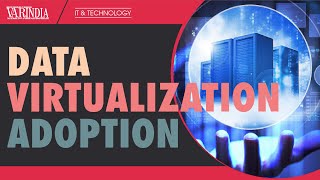#Cabinet #DRDO #DroneSwarm
Green Cloud Computing Technology
Each person has a moral right to a healthy and sustainable environment. Sustainability is long-lasting welfare in terms of economy and environment. Green cloud technology entails designing, producing, and using the digital space to reduce the Technology’s impact on the environment. Green Cloud Computing (GCC) offers a great tool that addresses and fulfills these goals. Green Cloud Computing has made virtualized servers and workers save energy. Organizations have resorted to using the GCC methodology, thus lessening the expenses of business activities. GCC technology has also allowed users to utilize the cloud space for storage purposes while decreasing its adverse effects. Therefore, minimizing the use of hazardous material has promoted the recyclability of factory waste products and maximized energy efficiency during a lifetime. The ultimate goal of GCC is to reduce the power consumption of large data centers. Average computer users also have the capability of implementing green practices during their data usage, such as: turning off their computers, recycling electronic waste products, refurbishing electronic devices instead of purchasing new ones, and using sleep mode while away from their computers. Green cloud computing has become an impressive solution that has aided in addressing matters of storage, processing of high-volume data at a lower cost, high speed, on-demand, and pay per use, etc.
Data centers are the main components of cloud computing. Its design is usually based on the network of computing and storage resources that enable the delivery of shared applications and data. There are three types of data centers; software as a service, infrastructure as a service, and platform as a service. Energy consumption and environmental effects from data centers are significant challenges to cloud computing. With a rapid increase in social applications a.

#Cabinet #DRDO #DroneSwarm
Green Cloud Computing Technology
Each person has a moral right to a healthy and sustainable environment. Sustainability is long-lasting welfare in terms of economy and environment. Green cloud technology entails designing, producing, and using the digital space to reduce the Technology’s impact on the environment. Green Cloud Computing (GCC) offers a great tool that addresses and fulfills these goals. Green Cloud Computing has made virtualized servers and workers save energy. Organizations have resorted to using the GCC methodology, thus lessening the expenses of business activities. GCC technology has also allowed users to utilize the cloud space for storage purposes while decreasing its adverse effects. Therefore, minimizing the use of hazardous material has promoted the recyclability of factory waste products and maximized energy efficiency during a lifetime. The ultimate goal of GCC is to reduce the power consumption of large data centers. Average computer users also have the capability of implementing green practices during their data usage, such as: turning off their computers, recycling electronic waste products, refurbishing electronic devices instead of purchasing new ones, and using sleep mode while away from their computers. Green cloud computing has become an impressive solution that has aided in addressing matters of storage, processing of high-volume data at a lower cost, high speed, on-demand, and pay per use, etc.
Data centers are the main components of cloud computing. Its design is usually based on the network of computing and storage resources that enable the delivery of shared applications and data. There are three types of data centers; software as a service, infrastructure as a service, and platform as a service. Energy consumption and environmental effects from data centers are significant challenges to cloud computing. With a rapid increase in social applications a
Technology video | 167 views

Course Description : /redirect?q=http%3A%2F%2Fwww.bisptrainings.com%2Fcourse%2FDevOps-for-Developers&redir_token=Fyg7L7hXdMEYPm7DmRlXw7CSRch8MTUwNzE4OTE3MkAxNTA3MTAyNzcy&event=video_description&v=OEFQ2fI4hZc
Watch Virtualization & Cloud computing DevOps With HD Quality
Education video | 549 views

Course Description : http://www.bisptrainings.com/course/DevOps-for-Developers
Watch Virtualization & Cloud computing DevOps With HD Quality
Education video | 488 views

Digital adoption is on all time high and cloud computing is emerging as a game changer and major enabler, across areas. Integrating cloud into your existing enterprise security program requires an assessment of your resources and business needs to develop a fresh approach to your culture and cloud security strategy. Cloud security is a set of policies, controls, procedures and technologies that should work together to protect your cloud-based applications and systems. From facilitating video conferencing for hybrid workplaces and empowering smart connected devices to helping accelerated growth of AI and ML through data driven insights, Cloud Computing has come a very long way from being just a virtual data storage platform. With increasing significance of Data, Cloud computing too is fast gaining importance among both, consumers as well as software and product development companies. And while these exciting new innovations powered by Cloud continue to disrupt various sectors across the globe, it is the silent yet powerful emergence of cloud as a potential enabler to fight of phishing and cybercrimes in the digital world.
Cybersecurity and regulatory compliance became the top two biggest concerns of corporate boards, some are adding cybersecurity experts specifically to scrutinize security and risk issues. It is ironic to note here that data security remained one of the chief concerns for businesses who hesitated the shift to cloud a few years ago. And now the same technology solution is helping to not just combat cybercrime but also became a potential platform that can empower other technologies like AI and ML to detect and prevent cybercrimes. As the new normal takes shape, all organizations will need an always-connected defensive posture, and clarity on what business risks remote users elevate to remain secure. The need of the hour is the brands and businesses seeking to ensure a safer cloud computing experience, need to also ensure that they work
Technology video | 191 views

Cloud and Edge computing going to help customers in 2021
Cloud and Edge computing going to help customers in 2021
Technology video | 116 views

Advocate (Dr.) Prashant Mali, Cybercrime & Privacy Lawyer- Bombay High Court at #13thWIITF2023
Every organization should start preparing for cloud computing and Digital Personal Data Protection
Technology video | 191 views

#Samsung #Vedantu #PiyushGoyal
Data Virtualization Adoption
The government is targeting an investment of Rs 3 lakh crore in the next five years as part of the hyper-scale data centre scheme and is planning to provide between 3 to 4% of capital investment as an incentive to companies, along with real estate support and faster clearances. Data centre is a big growth segment for many players, with digitisation taking off across a multitude of our lives, both personal and professional. Most of the enterprises move into the next phase of quickly accessing data without persistently storing it, there will be rapid data virtualization adoption. Data virtualization software acts as a bridge across multiple, diverse data sources, bringing critical decision-making data together in one virtual place to fuel analytics. Data virtualization addresses the data movement challenge by ensuring data remains at the source — yet is also available for consumption in real-time for consuming applications. It provides a modern data layer that enables users to access, combine, transform, and deliver datasets with breakthrough speed and cost-effectiveness.
Data virtualization technology gives users fast access to data housed throughout the enterprise—including in traditional databases, big data sources, and cloud and IoT systems—at a fraction of physical warehousing and extract/transform/load time and cost. With data virtualization, users can apply a range of analytics—including visualized, predictive, and streaming analytics—on fresh, up-to-the-minute data updates. Through integrated governance and security, data virtualization users are assured their data is consistent, high quality, and protected. Additionally, data virtualization allows for more business-friendly data, transforming native IT structures and syntax into easy-to-understand, IT-curated data services that are easy to find and use via a self-service business directory. Data virtualization
Technology video | 228 views

Is Edge computing the most secure computing?
Is Edge computing the most secure computing?
Technology video | 268 views

There is a continued dialogue among (Cloud Vs Edge), on who will overtake whom. The future of edge computing is right around the corner. Experts feel that it has the power to protect the climate, improve our health, and squash road rage. However, even though cloud-based computing is great for many things, there are some drawbacks.
IDC forecasts the global edge computing market to reach $250 billion by 2024, with a compounded annual growth of 12.5%. No wonder the industry is talking about Edge Computing.
#Edgecomputing reclaims much of the storage and power that cloud computing took on over the years. Businesses are always trying to improve the reliability and performance of their software for users, while at the same time trying to reduce their own costs. We have seen how CDNs (content delivery networks) are an early form of edge software, with companies originally serving static content from locations closer to their users. The rise of CDNs has made it easier to roll out your entire application as close to your users as possible.
Edge computing is one of the 'new revolutionary technologies' that can change organizations wanting to break free from previous limitations of traditional cloud-based networks. The next 12-18 months will prove to be the natural inflection for edge computing. Practical applications are finally emerging where this architecture can bring real benefits.
91% of our data today is created and processed in centralized data centres. Cloud computing will continue to contribute to businesses regarding cost optimization, agility, resiliency, and innovation catalyst. But in the future, the 'Internet of Behaviours (IoB)' will power the next level of growth with endless new possibilities to re-imagine the products & services, user experiences, and operational excellence.
IoT, IIoT, AI, ML, Digital Twin, and Edge computing are at the core of the Internet of Behaviours. As per Gartner�
Technology video | 218 views

Jio Free 10GB Data | Jio 10GB Data Free Offer | My jio app se free data kaise le 2023 | Jio free data
Topics Covered in This Video:-
Jio New Offer
Jio Offer
Jio 4G Free Offer
Jio Free Offer
Jio Offer Today
Reliance Jio New Offer
Airtel New Offer
Airtel Free Offer
Idea New Offer
Idea free Offer
Vodafone New Offer
Vodafone Free Offer
Jio Sim Free Recharge
Jio Free Recharge
Jio Free Internet
Jio Free Data
Your Queries:-
my jio app se free data kaise le
jio app se free data kaise paye
jio me free data kaise paye
jio me free data kaise paye 2023
jio pe free data kaise paye
jio sim me free data kaise paye
free data jio
jio free data
jio free data 2023
how to get my jio app free data
jio engage new offers
jio ka free data kaise paye
my jio app se free data kaise le 2023
my jio app se free data kaise le 2gb
jio free data today Jio Engage 2022
jio number free Data
Jio free data win Today New offer
jio free 2GB data jio number
Jio Free 2GB Data Vaucher offer
Jio New Offer Today Free 2GB Data data
Jio Number 2GB Free Offer
Jio Free Data
Jio Free Data Offer
Jio Engage Free Data Vaucher
Myjio Free data
Jio Free data Claim
Reliance Jio New Data offer
2GB Free Data
Jio Engage TVS Data Offer
Free 2GB TVS Jio Offer
jio free data 2023
jio free data code 2023
jio free data offer 2023
jio free data trick 2023
jio me free data kaise paye 2023
jio free internet 2023
jio free data code 2023 today
jio free data new code 2023
jio free recharge 2023
jio free internet offer 2023
jio free 10 gb data 2023
free recharge 2023 jio
free recharge app 2023
jio free data today 2023
jio new offer today 2023
jio free internet code 2023
jio free data claim code 2023
tabcon boy
JIO ME DATA LO
JIO ME FREE DATA KAISE LE
HOW
News video | 965 views

Bihar में अगला CM तय ! #nitishkumar #tejashwiyadav #laluyadav #prashantkishor #bihar #biharnews #biharpolitics #biharelection #bjp #nda #breakingnews #dblive
Please Subscribe
DB LIVE : https://www.youtube.com/@DBLive
DB LIVE Bihar-Jharkhand : https://www.youtube.com/@DBLiveBiharJharkhand
DB LIVE Maharashtra : https://www.youtube.com/@DBLiveMaharashtra
DB Live Haryana : https://www.youtube.com/@dbliveharyana
DB LIVE Jammu-Kashmir : https://www.youtube.com/@DBLIVEJk
DB LIVE Delhi : https://www.youtube.com/@DBLIVEDelhi
DB LIVE UP-UK : https://www.youtube.com/@DBLIVEupuk
___________________________________________________________________
Get paid membership : https://www.youtube.com/channel/UCBbpLKJLhIbDd_wX4ubU_Cw/join
Like us on Facebook :https://www.facebook.com/dbliveofficial
Follow us on Twitter : https://twitter.com/dblive15
Follow us on Instagram : https://www.instagram.com/dblive.official/
Follow Us On WhatsApp : https://whatsapp.com/channel/0029VaW4v2P0Vyc9Z4j6Cq2i
Visit DB Live website : http://www.dblive.co.in
Visit Deshbandhu website : http://www.deshbandhu.co.in/
DB Live Contact : dblive15@gmail.com
Bihar में अगला CM तय ! Nitish Kumar | Tejashwi Yadav | Bihar Politics | Bihar Election | #dblive
News video | 5641 views

कांग्रेस की बड़ी प्रेस कॉन्फ्रेंस ! Congress Press Conference | Ajay Kumar Lallu| Bhakta Das |#dblive
Please Subscribe
DB LIVE : https://www.youtube.com/@DBLive
DB LIVE Bihar-Jharkhand : https://www.youtube.com/@DBLiveBiharJharkhand
DB LIVE Maharashtra : https://www.youtube.com/@DBLiveMaharashtra
DB Live Haryana : https://www.youtube.com/@dbliveharyana
DB LIVE Jammu-Kashmir : https://www.youtube.com/@DBLIVEJk
DB LIVE Delhi : https://www.youtube.com/@DBLIVEDelhi
DB LIVE UP-UK : https://www.youtube.com/@DBLIVEupuk
___________________________________________________________________
Get paid membership : https://www.youtube.com/channel/UCBbpLKJLhIbDd_wX4ubU_Cw/join
Like us on Facebook :https://www.facebook.com/dbliveofficial
Follow us on Twitter : https://twitter.com/dblive15
Follow us on Instagram : https://www.instagram.com/dblive.official/
Follow Us On WhatsApp : https://whatsapp.com/channel/0029VaW4v2P0Vyc9Z4j6Cq2i
Visit DB Live website : http://www.dblive.co.in
Visit Deshbandhu website : http://www.deshbandhu.co.in/
DB Live Contact : dblive15@gmail.com
कांग्रेस की बड़ी प्रेस कॉन्फ्रेंस ! Congress Press Conference | Ajay Kumar Lallu| Bhakta Das |#dblive
News video | 2118 views

Rahul का मिशन गुजरात, घबराकर Modi भी पहुंचे, Pegasus पर SC में घिरी सरकार ! #pegasus #congress #bjp #rahulgandhi #modi #election #yogiadityanath #sambhalnews #dblive
Please Subscribe
DB LIVE : https://www.youtube.com/@DBLive
DB LIVE Bihar-Jharkhand : https://www.youtube.com/@DBLiveBiharJharkhand
DB LIVE Maharashtra : https://www.youtube.com/@DBLiveMaharashtra
DB Live Haryana : https://www.youtube.com/@dbliveharyana
DB LIVE Jammu-Kashmir : https://www.youtube.com/@DBLIVEJk
DB LIVE Delhi : https://www.youtube.com/@DBLIVEDelhi
DB LIVE UP-UK : https://www.youtube.com/@DBLIVEupuk
___________________________________________________________________
Get paid membership : https://www.youtube.com/channel/UCBbpLKJLhIbDd_wX4ubU_Cw/join
Like us on Facebook :https://www.facebook.com/dbliveofficial
Follow us on Twitter : https://twitter.com/dblive15
Follow us on Instagram : https://www.instagram.com/dblive.official/
Follow Us On WhatsApp : https://whatsapp.com/channel/0029VaW4v2P0Vyc9Z4j6Cq2i
Visit DB Live website : http://www.dblive.co.in
Visit Deshbandhu website : http://www.deshbandhu.co.in/
DB Live Contact : dblive15@gmail.com
#DBLiveBreaking :Rahul का मिशन गुजरात, घबराकर Modi भी पहुंचे, Pegasus पर SC में घिरी सरकार ! #dblive
News video | 2121 views

Maharashtra-Bihar बने BJP के लिए बड़ी मुसीबत | Rahul Gandhi | PM modi | Nitish Kumar | #dblive #NewsPoint
Please Subscribe
DB LIVE : https://www.youtube.com/@DBLive
DB LIVE Bihar-Jharkhand : https://www.youtube.com/@DBLiveBiharJharkhand
DB LIVE Maharashtra : https://www.youtube.com/@DBLiveMaharashtra
DB Live Haryana : https://www.youtube.com/@dbliveharyana
DB LIVE Jammu-Kashmir : https://www.youtube.com/@DBLIVEJk
DB LIVE Delhi : https://www.youtube.com/@DBLIVEDelhi
DB LIVE UP-UK : https://www.youtube.com/@DBLIVEupuk
___________________________________________________________________
Get paid membership : https://www.youtube.com/channel/UCBbpLKJLhIbDd_wX4ubU_Cw/join
Like us on Facebook :https://www.facebook.com/dbliveofficial
Follow us on Twitter : https://twitter.com/dblive15
Follow us on Instagram : https://www.instagram.com/dblive.official/
Follow Us On WhatsApp : https://whatsapp.com/channel/0029VaW4v2P0Vyc9Z4j6Cq2i
Visit DB Live website : http://www.dblive.co.in
Visit Deshbandhu website : http://www.deshbandhu.co.in/
DB Live Contact : dblive15@gmail.com
Maharashtra-Bihar बने BJP के लिए बड़ी मुसीबत | Rahul Gandhi | PM modi | Nitish Kumar | #dblive News
News video | 2000 views

औरंगज़ेब पर NDA में दरार.. फ़ड़नवीस-शिंदे में टकराव के बीच अचानक मुंबई पंहुचे Rahul Gandhi |#dblive
Please Subscribe
DB LIVE : https://www.youtube.com/@DBLive
DB LIVE Bihar-Jharkhand : https://www.youtube.com/@DBLiveBiharJharkhand
DB LIVE Maharashtra : https://www.youtube.com/@DBLiveMaharashtra
DB Live Haryana : https://www.youtube.com/@dbliveharyana
DB LIVE Jammu-Kashmir : https://www.youtube.com/@DBLIVEJk
DB LIVE Delhi : https://www.youtube.com/@DBLIVEDelhi
DB LIVE UP-UK : https://www.youtube.com/@DBLIVEupuk
___________________________________________________________________
Get paid membership : https://www.youtube.com/channel/UCBbpLKJLhIbDd_wX4ubU_Cw/join
Like us on Facebook :https://www.facebook.com/dbliveofficial
Follow us on Twitter : https://twitter.com/dblive15
Follow us on Instagram : https://www.instagram.com/dblive.official/
Follow Us On WhatsApp : https://whatsapp.com/channel/0029VaW4v2P0Vyc9Z4j6Cq2i
Visit DB Live website : http://www.dblive.co.in
Visit Deshbandhu website : http://www.deshbandhu.co.in/
DB Live Contact : dblive15@gmail.com
औरंगज़ेब पर NDA में दरार.. फ़ड़नवीस-शिंदे में टकराव के बीच अचानक मुंबई पंहुचे Rahul Gandhi |#dblive
News video | 1974 views

मोदी से टूटा संघ का भरोसा Bihar में संभाली कमान | Nitish Kumar | Mohan Bhagwat | Tejashwi |#dblive
Please Subscribe
DB LIVE : https://www.youtube.com/@DBLive
DB LIVE Bihar-Jharkhand : https://www.youtube.com/@DBLiveBiharJharkhand
DB LIVE Maharashtra : https://www.youtube.com/@DBLiveMaharashtra
DB Live Haryana : https://www.youtube.com/@dbliveharyana
DB LIVE Jammu-Kashmir : https://www.youtube.com/@DBLIVEJk
DB LIVE Delhi : https://www.youtube.com/@DBLIVEDelhi
DB LIVE UP-UK : https://www.youtube.com/@DBLIVEupuk
___________________________________________________________________
Get paid membership : https://www.youtube.com/channel/UCBbpLKJLhIbDd_wX4ubU_Cw/join
Like us on Facebook :https://www.facebook.com/dbliveofficial
Follow us on Twitter : https://twitter.com/dblive15
Follow us on Instagram : https://www.instagram.com/dblive.official/
Follow Us On WhatsApp : https://whatsapp.com/channel/0029VaW4v2P0Vyc9Z4j6Cq2i
Visit DB Live website : http://www.dblive.co.in
Visit Deshbandhu website : http://www.deshbandhu.co.in/
DB Live Contact : dblive15@gmail.com
मोदी से टूटा संघ का भरोसा Bihar में संभाली कमान | Nitish Kumar | Mohan Bhagwat | Tejashwi |#dblive
News video | 1985 views